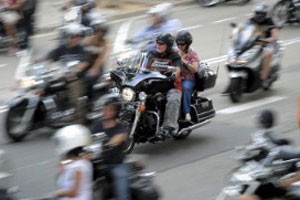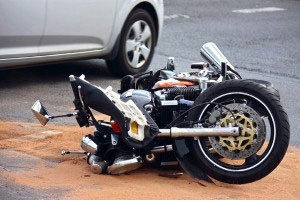Study: Lane-Splitting Safer Than Originally Thought


While there is
only one state that allows motorcyclists to actively lane-split
while riding, many oppose the idea by saying it's unsafe. However,
a
new report from the University of California, Berkeley, claimed
the act of lane-splitting is actually "relatively safe" when
performed in the correct manner.
Since California is the only state permitting lane-splitting, there
is still a lot of unknown data when it comes to the act. Other
states such as Washington and Oregon are
working on legislation that would allow the act in those states
as well.
For the research on the UC Berkeley study, nearly 6,000 motorcycle
accidents were investigated between June 2012 and August 2013.
Researchers found out 997 of the accidents involved
lane-splitting.
Currently, the practice is completely legal at roughly any speed,
but new legislation is in the works to put stricter regulations on
lane-splitting. The report, however, found the practice to be safer
when traffic is moving at slower speeds.
"Lane-splitting appears to be a relatively safe motorcycle riding
strategy if done in traffic moving at 50 MPH or less and if
motorcyclists do not exceed the speed of other vehicles by more
than 15 MPH," the study reported.
More Skilled Cyclists Involved In Fewer Accidents?

The data showed
some remarkable statistics on the act of lane splitting. In fact,
those who choose not to lane split were more actively involved in
motorcycle traffic accidents compared to those who split lanes
frequently. Additionally, the report suggested that drivers who
split lanes are safer and more skilled motorcyclists than those who
do not.
Some of the other telling statistics in the lane-splitting report
discovered only 80 percent of drivers involved in an accident while
lane-splitting had a valid license. Additionally, 90 percent of
lane-splitting accidents involved males and 60 percent were under
the age of 45. For the time of the day, Saturday was found to
represent the highest number of lane-splitting accidents, while
Tuesday had the safest marks.
Many motorcyclists choose to split lanes because of the fear of
being rear-ended by vehicles in traffic. For riders, this common
fender-bender between two standard cars actually turns out to be
much more catastrophic for motorcyclists. While this is a fairly
uncommon accident, only around 5% of accidents with
non-lane-splitting motorcycles, there chances of being rear-ended
is about cut in half if you are lane-splitting.
Practice Still Unwelcome By Many

Even with
data showing that lane-splitting is a safer practice than many
people originally thought, several motorists still do not like the
fact motorcyclists can skip through traffic. In the UC Berkeley
study, of the standard passenger vehicle drivers surveyed, 61
percent said they "somewhat" or "strongly disapproved" of lane
splitting.
Another detail of the report found of the approximate 6,000
accidents detailed in the study, roughly 25 percent involved
Harley-Davidson
motorcycles. The next two types of bike involved in the most
crashes were Honda and Yamaha, respectively.
Some believe that Harley-Davidson motorcycles are involved in
numerous crashes because they are typically much heavier and more
difficult to control than smaller bikes. This can be a problem for
a new rider going straight to a Harley-Davidson motorcycle, or for
those who learned on smaller bikes and made the move to larger
ones.
Motorcyclists should always be aware of the type of motorcycle they
ride and know exactly how the vehicle works before taking it on the
highway. Additionally, riders can help prevent serious injuries by
wearing certified motorcycle gear. Things such as armored jackets
and full-faced helmets can go a long way in protecting a rider on
the highway.
